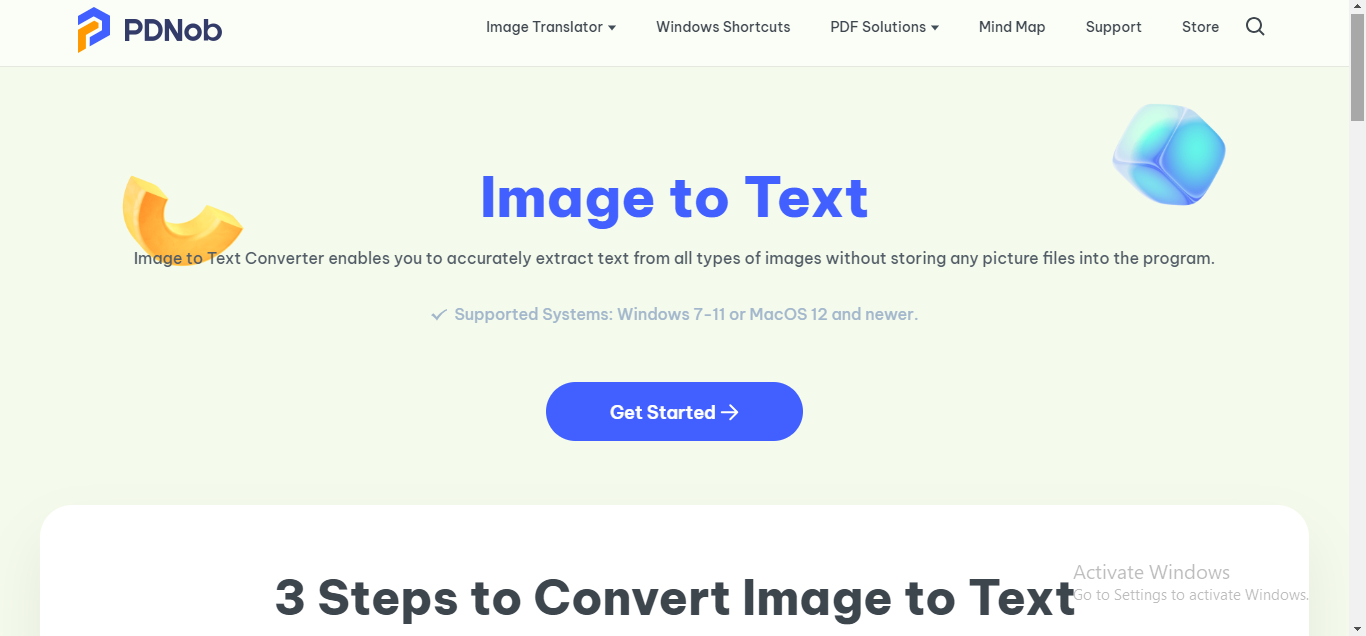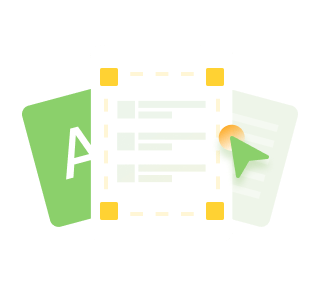Effective Techniques and Tools to Translate Labels
Businesses are no longer confined to serving customers within their home countries. To thrive internationally, companies must communicate effectively with diverse audiences, and the ability to translate labels accurately plays a critical role in this process.
A well-translated label goes beyond just language—it ensures compliance, conveys brand values, aligns with cultural norms, and builds trust with consumers.
Accurate translations also help avoid misunderstandings, legal issues, and reputational risks, making the effort to translate labels a cornerstone of global business success. It ensures your products are accessible, understandable, and appealing to customers in any market.
This guide dives deep into the techniques and tools you need to master label translation, with practical steps, modern tools, and best practices to help you achieve flawless results.

Part 1. Understanding Label Translation
Label translation involves adapting product labels from one language to another to make them suitable for international markets. This task requires more than just linguistic accuracy; it demands cultural awareness, adherence to legal standards, and a keen eye for detail.
PDNob Image Translator
Image to Text Converter enables you to accurately extract text from all types of images without storing any picture files into the program.
Why Is Label Translation Important?
- Compliance: Different countries have regulations on what must appear on product labels, such as nutritional information, safety warnings, and legal disclaimers.
- Brand Reputation: Poorly translated labels can damage your brand’s credibility and alienate potential customers.
- Customer Experience: Clear, accurate translations help customers make informed decisions, increasing trust and loyalty.
- Cultural Nuances: A literal translation might not capture the intended meaning, leading to misunderstandings.
- Space Constraints: Labels have limited space, so translations must be concise yet clear.
- Regulatory Variations: Each country has unique requirements, which can be complex to navigate.
Challenges in Label Translation
By understanding the importance and challenges of label translation, businesses can better prepare to address these issues effectively.
Part 2. Traditional Methods to Translate Labels
Before advanced tools and software, businesses relied heavily on traditional methods for label translation. These methods, while still relevant, have their limitations.
1. Human Translators
Professional translators specialize in converting text from one language to another, ensuring accuracy and cultural relevance. They can handle complex texts and adapt content to fit the cultural context of the target audience.
Advantages:
- High accuracy.
- Contextual understanding.
- Adaptability to local cultural nuances.
- Time-consuming.
- Expensive for large-scale projects.
Disadvantages:
2. Bilingual Staff
Some companies assign translation tasks to bilingual employees, especially in smaller businesses with limited budgets.
Advantages:
- Cost-effective for small projects.
- Employees understand the company’s brand tone and messaging.
- May lack professional translation expertise.
- Risk of inconsistencies and errors.
Disadvantages:
3. Translation Agencies
These agencies provide end-to-end services, including translation, proofreading, and regulatory compliance checks. They often have access to a team of experts specializing in various industries.
Advantages:
- Comprehensive services.
- Access to specialized expertise.
- Can be expensive.
- Longer turnaround times for complex projects.
Disadvantages:
While traditional methods excel in certain scenarios, they often fall short when dealing with high volumes or tight deadlines.
Part 3. Modern Tools to Translate Labels
Thanks to advancements in technology, businesses now have access to powerful tools that streamline the label translation process. These tools are faster, more efficient, and cost-effective, making them ideal for companies looking to scale.
1. PDNob Image Translator
PDNob Image Translator stands out as an innovative tool designed to simplify label translation. Combining Optical Character Recognition (OCR) with advanced translation capabilities, this tool allows users to extract text from images, PDFs, or scanned documents and translate it into their desired language.
PDNob Image Translator
Image to Text Converter enables you to accurately extract text from all types of images without storing any picture files into the program.
Features:
- Ease of Use: With a simple interface, PDNob Image Translator enables users to translate labels quickly without requiring technical expertise.
- OCR Technology: Extracts text accurately from images or packaging, making it ideal for translating product labels or complex designs.
- Multilingual Support: Supports a wide range of languages, ensuring versatility for global businesses.
- Cost-Effective: Saves time and resources by combining text extraction and translation into a single tool.
Best Use Case: It is the most advanced and precise tool you can find in the market. It is suitable for all type of projects from small to big ones.

2. Computer-Assisted Translation (CAT) Tools
CAT tools, like SDL Trados Studio and MemoQ, are widely used by professional translators. These tools store previously translated phrases in a translation memory, ensuring consistency and efficiency.
Features:
- Glossary creation for industry-specific terms.
- Automated quality checks.
- Integration with regulatory guidelines.
Best Use Case: Projects requiring consistency across multiple labels or large-scale translations.

3. Machine Translation (MT)
MT tools like Google Translate and Microsoft Translator offer instant translations, making them suitable for quick and simple tasks.
Pros
- Speed: Translations are almost instantaneous.
- Cost: Often free or inexpensive.
Cons
- Lack of context and cultural understanding.
- Requires human editing for professional use.
4. Optical Character Recognition (OCR) Tools
OCR technology converts images of text into editable formats, which can then be translated. Tools like PDNob Image Translator combine OCR with translation capabilities, making them ideal for scanned labels or product packaging.
Benefits of OCR Tools:
- Fast and accurate text extraction.
- Ability to work with various file formats, including PDFs and images.
- Simplifies the process of translating complex labels.

Part 4. Step-by-Step Guide to Translating Labels Using PDNob Image Translator
PDNob Image Translator is a versatile tool that simplifies the translation process for product labels. It is the best tool to Translating Labels in simple and precise way. Its OCR and translation features make it particularly useful for businesses handling large volumes of labels.
By following these steps, businesses can leverage PDNob Image Translator to efficiently translate labels without compromising accuracy.
Download and Install PDNob Image Translator
- Visit the PDNob Image Translator website and download the software.
- Follow the installation instructions, ensuring compatibility with your operating system.
PDNob Image Translator
Image to Text Converter enables you to accurately extract text from all types of images without storing any picture files into the program.
Import the Label Image
- Open the application and select the 'Import Image' option.
- Choose the file containing the label you want to translate. Supported formats include PNG, JPG, and PDF.
Extract Text Using OCR
- Use the OCR feature to extract text from the image.
- Review the extracted text for accuracy, ensuring no errors or omissions.
Translate the Text
- Select the target language and click the 'Translate' button.
- The software will provide a translated version of the text.
Edit and Review
- Carefully review the translated text for any errors or areas requiring adjustments.
- Ensure the translation aligns with regulatory and cultural requirements.
Export the Translated Label
- Save the translated text in your preferred format.
- Use this text to update your product labels or packaging.
Part 5. Best Practices to Translate Labels Accurately
Even with the best tools and translators, achieving accurate label translations requires adhering to specific best practices to ensure success in diverse markets. The ability to translate labels effectively combines technical expertise with cultural sensitivity.
Understand Local Regulations Regulations for product labels vary widely by country, and non-compliance can lead to legal challenges or market restrictions. For example:
- EU: Requires labels to include CE markings, safety instructions, and nutritional information.
- US: Labels must comply with FDA regulations, including ingredient lists and allergen warnings. Tip: Research your target market’s labeling laws thoroughly before starting the translation process.
Maintain Consistency Consistency in terminology across all labels enhances clarity and reinforces your brand identity. Use tools like translation memory software to ensure uniformity, especially for repeated phrases or technical terms.
Engage Native Speakers Collaborate with native speakers who understand the target language and culture. They can identify subtle nuances, idiomatic expressions, and cultural contexts that tools might miss, ensuring your translated labels resonate with local audiences.
Test Translations Before finalizing your labels, conduct focus groups or surveys in the target market. Feedback from real consumers can highlight unclear or inappropriate translations, helping you refine the content before it goes to print.
Stay Updated Laws, regulations, and language trends evolve constantly. Ensure your labels remain accurate and compliant by regularly reviewing and updating translations to reflect any changes in your target market.
Note: By following these best practices to translate labels, you can enhance accuracy, maintain compliance, and create labels that effectively communicate your product’s value in every market.
Part 6. Conclusion
Label translation is more than just a linguistic task; it's a strategic effort that requires precision, cultural understanding, and adherence to legal standards. The ability to translate labels effectively involves adapting content to resonate with local audiences while meeting regulatory requirements.
By combining traditional methods with modern tools like PDNob Image Translator, businesses can streamline the process, ensuring accurate, compliant, and culturally relevant translations.
Embracing best practices and leveraging the right technology to translate labels will help your business build trust with global audiences, enhance customer experience, and strengthen brand loyalty. Accurate label translation also minimizes the risk of costly mistakes, legal challenges, and miscommunication in international markets.
Start mastering label translation today to unlock new opportunities, expand your reach, and position your brand as a trusted global player.
PDNob Image Translator
Image to Text Converter enables you to accurately extract text from all types of images without storing any picture files into the program.






